Last Updated 12/28/23. Original publish date 12/4/22.
Sadly, I’ve had to remove K’Nex from this list. They’ve updated their labels to read “Made in China with USA parts”, likely due to the new Rules that the FTC started enforcing in August 2022.
That’s the bad news. The good news is even as big brands are treating our children as their personal ATM machines, small brands are making an effort to recreate iconic toys and produce them right here in the USA. I’ve added two new brands to the list: Uncle Goose and TimMee. If these don’t sounds familiar to you, the products they made will: wooden blocks and plastic Army men.
7/13/23 Update
Sadly, I have to take Lincoln Logs off this list. In 2014 there was a lot of hype and fanfare when K’Nex moved the making of Lincoln Logs back to the USA from China. But the signs are clear. When I write to Basic Fun to ask where Lincoln Logs are made today, they ignore me. And the Country of Origin on Amazon.com and FatBrain have both changed to China. Therefore, I can no longer recommend them.
The good news is that a company called Roy Toy is made in the USA, and after buying a set I find that they’re superior than Lincoln Logs in almost every way. More below under #4.
Original Post
Where you should buy ALL your toys:
While other retailers are deliberately hiding country of origin from consumers, I found a few toy retailers that respect their customers enough to provide the ability to filter by country of origin. The companies are Fat Brain Toys, HABA, and Oompa. Be sure to shop at these sites, even if you find the price slightly higher at Amazon, Walmart, and Target. Why? Because retailers like this respect you, and don’t see you as just another figure on a spreadsheet to squeeze money out of.
Why are so many toys made in China?
After the China was granted admission to the WTO in 2001, American toy companies fell over themselves to shut down their own domestic manufacturing capability and shift all their manufacturing to China. Never mind the catastrophic effect that this would have on their local communities. Never mind that it was practically guaranteed that companies in China would steal all their intellectual property. All corporate executives saw were dollar signs. The imprimatur of the WTO gave them all the cover they needed to tell their shareholders and their customers that yes, China was just like any other country.
One can only imagine the number of people who amassed huge fortunes from this decision (hint: look at the estimated worth of anyone in the executive or legislative branches of the US government during these years).
2007. The year that should have changed everything, but didn’t.
2007 should have been an eye-opening year. In August 2007 Mattel, the world’s largest toy company, recalled 19 million toys when it was discovered that many toys, from die-cast figures from the movie Cars to toys featuring Elmo and Dora the Explorer, contained lead. What makes this exceptionally frightening is that many of these toys were targeted at preschoolers who were more likely to put the toys in their mouths, and more likely to suffer brain damage by ingesting lead. Toys from other companies suffered the same fate–Thomas and Friends wooden train sets, Curious George plush toys, and many more.
This was the same year that thousands of pets grew sick and died because China manufacturers decided to cheat by putting chemicals into pet food that let them pass tests for protein but also caused kidney failure in pets.
Action was swift. China, being a totalitarian communist state, reacted by executing the head of their Food and Drug Administration, Xiaoyu Zeng. Seems that he was the sacrificial lamb to take on the sins of all the pet food and toy problems.
But other than this guy losing his head (actually, he died of lethal injection), what were the consequences of the debacle in 2007?
Sadly, not a lot. These days China makes 85% of all toys made in the world. And Mattel is a $8 billion company. So they seem to be doing all right.
How did we get here? While it’s easy to point the finger at “big business”, the reality is that this was a team effort. Politicians rushed to normalize trade relations with China without any meaningful conditions. Corporations rushed to move all their production to enjoy dirt-cheap costs without questioning why the costs were so cheap. And consumers loved getting more and more “cheap stuff”.
But what were the real costs?
Consequence #1: Safety
Did China manufacturing suddenly get safe after 2007? Or has China just become better at covering up problems through propaganda and the PR departments of the companies who outsourced to them?
The reality is, if you view the monthly report of recalls from the US Consumer Product Safety Commission, there are almost daily reports of safety violations with products from China. Just on my random viewing, I see a children’s robe made in Wuhan that was made of flammable material, a fishing game made in Shenzhen that tested positive for lead paint, an infant bath seat made in Dongguan that posed a drowning hazard, a plush shepherd toy from China that posed a laceration hazard, a bicycle helmet from Shenzhen that posed a risk of head injury, a science kit from China containing lead paint, and many more.
[December 2021 Update – it seems that the CPSC has removed the monthly China report from their Web site altogether, which is why that link currently goes to a dead page. I’m keeping that link in place to make a point–corporate America and the US government can be easily “convinced” by CCP lobbyists to remove content that the Chinese Communist Party finds “insulting”. One hopes this is just government incompetence and not a sign that the CPSC plans on going easy on China. You can still view the most recent recalls from China by going to their Recalls tool and searching for “Manufactured in” China. Just in the last few weeks I see a flammable children’s robe, a pair of wireless headphones that can catch on fire (which goes great with the robe), and a kid’s flashlight where children can easily access the delicious button cell batteries].
In fairness, sometimes product defects happen. But what’s disturbing is how routine these recalls have gotten. It’s as if unsafe product design has become a calculated risk of doing business. If a child gets sick, injured, or worse, American companies just need to be able to pay a few million dollars in settlement costs and allocate some PR money to mitigate the risk. Or a China company just needs to shut down and create a new “brand” under a different gibberish name. It’s a reflection of how amoral our business world has become.
It comes down to one word. Money. Because companies in China could be the “low bidder” on projects vs. manufacturers in the US or in other countries, they won every contract. Manufacturing that had been in the US, Europe, Japan, Taiwan shut down. Workers were fired. Factories were dismantled and sent to China.
Consequence #2: Intellectual Property Theft
Before the 2000s, when you went to places like Chinatown and saw knock-off products, they were usually laughable. But after 2001, you could start finding counterfeit products that were uncannily similar, and in some cases indistinguishable from the original. That’s because American brands were too foolish to think of the consequences of showing their contractors in China every secret about manufacturing.
Just one example. A few years ago, Disney’s Tsum Tsum plush animals were all the rage. Stores had problems keeping them in stock. My little girl loved them, and so I went to eBay and bought what I thought was a genuine Disney product, complete with the original label. But then it struck me. How is it that every retailer was long sold out, and yet these sellers on eBay had seemingly unlimited stock? It’s easy. The same factory workers and equipment that produced products for Disney just kept on running.
How can I avoid toys made in China?
Sadly, the reality is, you probably can’t. Toys were one of the first categories of products to be outsourced to China for a few reasons. Most notably, consumers of toys are extremely price sensitive–very few parents will be willing to pay more than a few dollars for a toy. And so toy manufacturers need to keep their production costs low in order for them to achieve higher volumes and higher margins.
And sadly, most consumers don’t think of the long-term consequences of their actions. What kind of a message are we sending our children when we buy them a toy that’s made by a worker who’s likely working in subhuman conditions, using raw materials that are damaging the environment, and that the money we’re paying is contributing to propping up a government that is going to be the cause of untold suffering in their lives (we know because this same government caused suffering of their people in our lifetimes and our parents’ and grandparents’ lifetimes)
How bad it is today?
It’s pretty bad. For example, as I was doing my research, two of the brands I identified as being made in the USA were the iconic Wilson football and the iconic Louisville Slugger baseball bat. And yes, as far as I can tell the Wilson football is still made in Ada, Ohio and Louisville Slugger wood bat is still produced by Hillerich & Bradsby Company out of Louisville, Kentucky.
But look behind the curtain and a chilling reality emerges. The Wilson Company and Louisville Slugger are owned by a company called Amer Sports, which is based in Helsinki, Finland. And in 2019 Amer Sports was bought out by a company called Anta Sports. Anta Sports is a $57 billion company based in JinJiang, Fujian, China.
Do you remember the incident in 2019 when Houston Rockets GM Daryl Morey tweeted support for the Hong Kong protests? It wasn’t even a tweet, it was a retweet saying “Fight for freedom. Stand with Hong Kong”. You can’t see it anymore because he deleted it right away after posting it. But not before the Chinese Basketball Association announced it was suspending relations with the Rockets, Tencent announced it was cancelling its $1.5 billion media deal, China’s state television announced it would not be airing Rockets games, and LeBron James went on every media outlet groveling apologies that Morey “wasn’t educated”. Oh yes, and Amer Sports announced that it was boycotting the NBA.
By May 2020 it looks like all was forgiven. Wilson Sporting Goods replaced Spalding brands (owned by Berkshire Hathaway) as the NBA ball supplier (not that that was a big loss either, as Spalding basketballs are manufactured in–you guessed it–China). Oh, and human rights, freedom of the press, and freedom of speech in Hong Kong are over.
How did that happen? One step at a time. Louisville Slugger probably didn’t think twice when a big Finnish company wanted to buy them out. And the stockholders of the Finnish company didn’t think twice when a China company decided to pay a premium for their shares. The result? A portion of every Wilson football and Louisville Slugger bat made in the USA goes to fund the Chinese Communist Party.
And so, they’re off this list. It doesn’t look like you can buy any major brand basketball or baseball bat that doesn’t go to help China. And if you think this phenomenon is limited to sporting equipment, you’re sadly mistaken.
About This List
I’ll probably post a few lists on toys (read my post on baby toys if you haven’t already), but I’ve been wanting for a while to spend some time talking about iconic toys that have stood the test of time AND are proudly NOT made in China.
A lot of these toys aren’t fancy. A spring. A plastic bat. A football. A deck of cards. They’re exactly the kinds of products you’d think a company would have outsourced to China years ago to enjoy much lower production costs. And yet these companies have stubbornly insisted on being made in the USA. And because of this they should be the first toys that you put in your toy box.
Like this List? Please help share it!
If you like this list, please share this page on Twitter, Facebook, and everywhere else you can. We need to send a message to companies that have refused to outsource to China that they made the right decision.
Want to support Made in the USA?
— NoToChina (@NoToChina_org) September 18, 2021
This Xmas, buy ONLY iconic toys like a Slinky from @AlexGlobaltoys, Crayons from @Crayola, Wiffle Bat from @WIFFLEballinc, K’NEX from @basicfuntoys, and most anything from @LittleTikes, @greentoysinc.https://t.co/NdpcoFjoUS


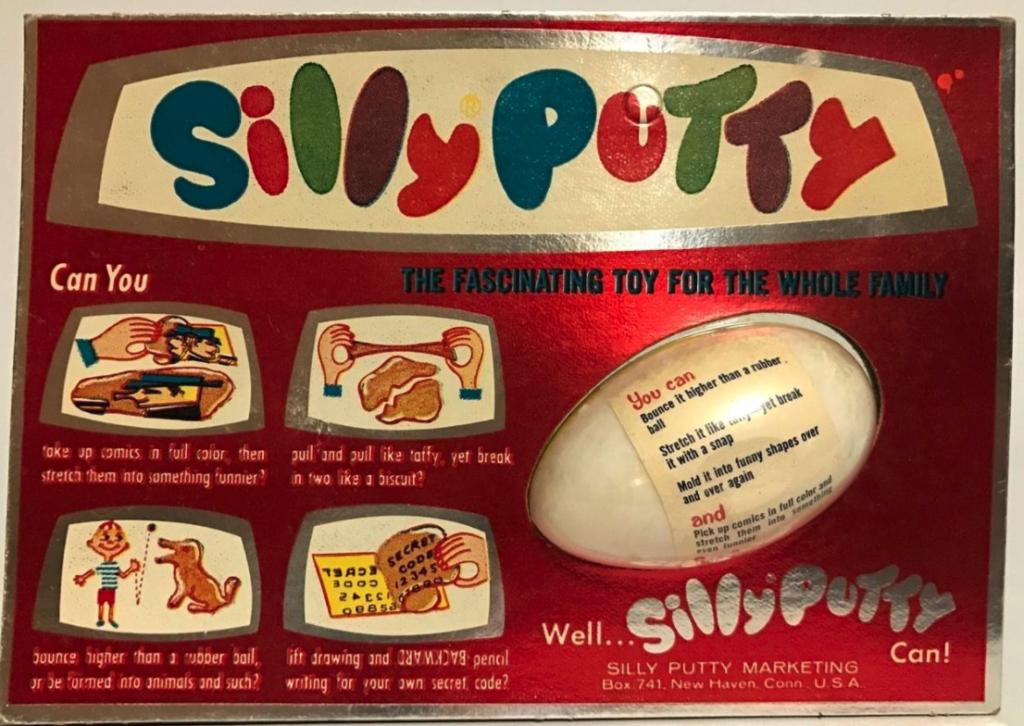
Iconic toys not made in China – Quick Ranking
1. Slinky
If you grew up in the United States and were anywhere near a staircase, chances are you owned a Slinky. If you’re old like me, you probably have random moments in your life when you find yourself singing the jingle, “A Slinky, A Slinky, for fun it’s a wonderful toy; A Slinky, A Slinky, it’s fun for a girl and a boy”.
The Slinky was invented in 1943 by American naval engineer Richard T. James. While developing springs that could support instruments on the high seas, he accidentally knocked a spring off a shelf and noticed that it “stepped”. He developed the first Slinky shortly after, which was a hit with the neighborhood kids. He and his wife Betty took out a $500 loan and formed James Industries, selling their first 400 Slinky units for $1 each.
Here’s where the story gets a little strange. Many accounts say that Richard joined a religious cult and abandoned his family. In 2006, James’s daughter posted an online message saying that this story was her mother’s side of the story, but her dad’s side of the story was that he chose to do missionary work in Bolivia and asked his wife to join him. Whatever the case, Betty ended up becoming president of the company from 1960 to 1998 and moved the headquarters from Philadelphia to Holidaysburn, PA, where it still remains today and still produces 100% of the world’s Slinkys.
Since the beginning, Betty James insisted on keeping the price affordable, It stayed at $1 for years and today can still be had for under $3.
Slinky has passed through several owners in recent years. The James’ company was sold to Poof Products, Inc. in 1998. In 2003 they merged to create Poof-Slinky, Inc. This company was acquired by Alex Brands which folded in the spring of 2020, leading to the shutdown of the Holidaysburg factory and the auction of all of its assets. The Slinky brand (along with Shrinky Dinks) was acquired by Just Play, who re-opened the factory and started producing Slinkys again.
Fingers crossed that Just Play will continue to keep Slinky made in the USA, despite the huge pressure on them to move it to China.
2. Crayola Crayons
Not everything from the Crayola company is not made in China. As they create new product lines, it’s an unfortunate reality that a lot of their products, such as toys or plastic containers, need to be made there.
But they do seem to be making an effort to keep manufacturing in the United States. I was pleasantly surprised to learn that most of their crayons are still manufactured in the United States out of their factory in Easton, Pennsylvania. I was even more happy to see all the markers I have were made in the USA as well.
Being a huge company, Crayola does have manufacturing facilities all over the world, which explains why Amazon reviews are often conflicting. Your best bet to make sure you’re supporting your own country is the visit a store in person and check the box. Buying on Amazon is just too risky; sellers will often buy products in Asia manufactured out of Asian facilities and re-sell them on Amazon.
If you’ve ever been handed a box of crayons at the Olive Garden, you’ll know instantly the difference between Crayola crayons and cheap made-in-China crayons. China crayons break easily, they don’t color solidly, and they leave a mess. That’s why Crayola’s decision to avoid China manufacturing wasn’t just patriotic on their part, it was wise strategy. By not giving away their methods and procedures to Chinese contractors, they can keep their secrets to themselves. I wish other US manufacturers had this kind of foresight–instead, more and more China is taking their secrets, creating their own brands, and cutting out the middleman who graciously told them all they need to know.
The 152 crayon collection is their highest reviewed product on Amazon–it’s the biggest crayon box available and contains most of their current colors, as well as glitter and metallic crayons as well. It also has a carrying caddy and a sharpener.
For the more traditional among us, their classic 64 crayon box with the sharpener is still available, as are their classic assortments of 32 and 16 crayons.
I had the pleasure of visiting The Crayola Experience with my family recently. The concept of the “factory tour” in the United States is dying, as factories themselves die. But the Crayola Experience did a great job at giving people a little glimpse at the process of crayon manufacturing just a short distance away. They have stations where you can print your own labels and affix them to crayons. They have craft activities that involve melting crayons and splattering them onto paper or making them into molds. They have coloring activities such as designing and cutting your own puzzle. And for those kids with short attention spans, there’s a lot of room to run and climb until they get exhausted.
3. Wiffle Ball and Bat
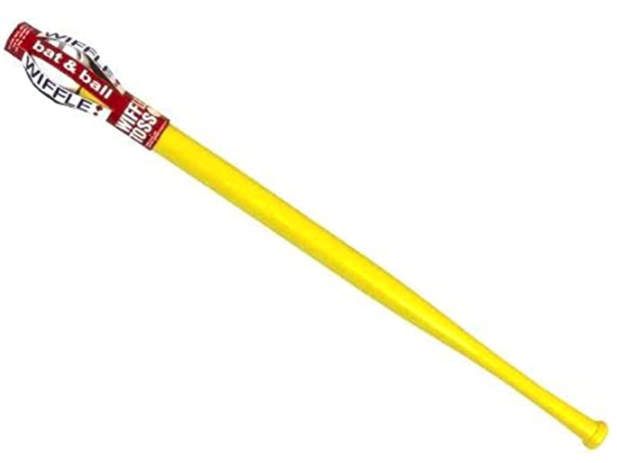
While I was doing research for this page, three things shocked me about the Wiffle ball and bat. First, that The Wiffle Ball, Inc. is still an independent company. Second, that hasn’t been subsumed by a big toy conglomerate. And third, that all Wiffle Balls and Bats are still produced out of Shelton, Connecticut.
The Wiffle Ball was invented in 1953. For years, of course, kids used whatever they could find to play stickball all over the country, from the prairies of Oklahoma to the sidewalks of New York. A man named David Millany was observing his kids and his friends playing baseball with a broomstick and a plastic golf ball. His son complained that his arm hurt by trying to throw curveballs with the golf ball. After some experimentation and help from a friend who work in plastics, he patented something he called “Game Ball”
The rest, as they say, is history. You can find people playing Wiffle Ball in backyards, beaches, parks, and streets. There are even Wiffle Ball tournaments. The World Wiffle Ball Championship was established in 1989, spawning many other leagues. As of 2020, the United Wiffle Championship Tournament determines the best of the best.
Wiffle bats and balls should be part of every red-blooded American household. It’s simple and easy to learn and satisfies that innate need of every kid to hit something with a bat. It teaches hand-eye coordination, fine motor skills, teamwork, and helps kids get acclimated to the concept of throwing and catching before they graduate to real baseballs. There is very little more satisfying to a parent to see the look of unadulterated joy in the eyes of their child when they make contact and send the Wiffle ball sailing. It is probably one of the closest things to the perfect toy ever made. And it’s cheap, and it’s made in the USA.
One caveat–I noticed on both Amazon and Walmart only third party sellers are selling these, which is often a magnet for counterfeiters or price gougers. Beware of the seller you buy from. Your best bet is to find a Wiffle ball and bat at a local store (I found one at my local CVS) and buy there. Or, go to this store, which is the official online distributor of all Wiffle products.
4. Roy Toy Paul Bunyan 200 Piece Deluxe Building Set
Lincoln Logs had been on this list since the beginning, but all signs are pointing to their parent company, Basic Fun, moving all manufacturing to China. This is especially tragic given that in 2014 there was a lot of celebratory fanfare when after many years manufacturing was moved to Maine. For years, the manufacturer insisted that the wooden pieces were made in the USA, but only the plastic pieces were made in China. But slowly but surely, any reference to “made in the USA” has been scrubbed from Lincoln Logs, and now the box clearly says “Made in China” again. There is something especially pernicious about something as iconic as a log cabin building set or an American flag being manufactured in China.
When one door closes, another opens. There’s a company called Roy Toy Manufacturing based in East Machias, Maine that has been producing their own log toy since the 1930s. After the founder’s death in the 1960s Roy Toy stopped making these toy sets, but in 1992 the founder’s grandson decided to revive Roy Toy as a business.
In many ways, Roy Toy blocks are in spirit more “Lincoln Logs” than Lincoln Logs. As Lincoln Logs evolved to contain more cheap plastic parts for its roof pieces and wooden blocks that are glazed to the point of looking like plastic, Roy Toy continues to be made of 100% natural pine wood for all its pieces. The result are houses that really look rustic and authentically American. The pieces seem to fit and lock in place much more snugly than Lincoln Logs ever did, and the roof pieces are dyed red and green like the original Lincoln Logs and not cheap plastic parts (unlike the original, the dyes used are all food safe).
I bought a set of Roy Toy logs on a recent trip to the Valley Forge National Historical Park. Kudos to the National Park Service for sourcing products made in the USA. Even though my daughter and I have a giant tub of Lincoln Logs, it’s this set that we return to over and over again for play.
In addition to the sets I highlighted here, there is a 550 piece deluxe set that will let you build an entire frontier town!
I also love that Roy Toy has innovated much more than Basic Fun, who is clearly using Lincoln Logs as a cash cow and has no intention of spending any money to improve them. On their site, you’ll find “earth friendly” blocks that have no dye whatsoever, as well as houses you can build and paint.
5. TEDCO Gyroscope
I remember one of my favorite toys growing up was a Gyroscope that I got, probably on a field trip or a family vacation to a museum or planetarium. I was amazed to see that TEDCO still makes these today, pretty much the same way that they made them in 1917 (they acquired the Chandler Company, the original manufacturers of these, back in 1982 but kept their production largely in place).
In a world of fidget spinners, pop-its, and other mind-numbing time wasters, here’s a toy that is both mesmerizing and educational. If you’ve never used one, the way it works is that you wind a string around the gyroscope, yank it, and then balance the whole thing on a stand.
Like the other toys on this list, it’s a toy that no kid should grow up without. The one caveat I’d have is to watch out on Amazon–from the reviews it looks like a lot of people are probably getting counterfeits. Make sure you check that the “Sold By” is someone reputable, like Fat Brain or Amazon. Or better yet, buy one from TEDCO’s site directly or another one of their made in USA products, including Light Prisms
6. Silly Putty
A long time before “slime” became a thing, there was a thing called Silly Putty. Similar to the origin story of Slinky, Silly Putty was invented during World War II. James Wright was working at the General Electric lab in New Haven, Connecticut. There was a severe shortage of rubber, since the Empire of Japan had occupied most of the islands in the Pacific with rubber trees. So the US government enlisted US industry to try to come up with a synthetic replacement for rubber.
During Wright’s experimentation he mixed boric acid with silicone oil and discovered that it produced a material with unique physical characteristics–sometimes it acted like a solid (it bounces, breaks cleanly, and shatters when you give it a sharp blow), and sometimes it acted like a liquid (it can flow and form puddles over time). It wasn’t practical for making rafts, tires, and boots, but it was mesmerizing to play with–you could stretch it, bounce it, and it didn’t go bad over time.
Back when newspapers were printed with petroleum based ink, it could lift newsprint right off of newspapers (more recent printing uses soy ink, which is why that doesn’t work anymore–and why newsprint doesn’t come off on your fingers the way it used to). It also makes a good adhesive; astronauts on the Apollo 8 mission preparing for the moon landing brought it to space with them for that purpose.
A marketing consultant named Peter Hodgson decided to sell the putty. He came up with the idea of packaging it into eggs, calling it Silly Putty, and selling it for $1. Over 300 million eggs have been sold since then, and they’re still going strong, likely to outlast the current fads of slime, pop-its, and fidget spinners.
In 1977, Binney and Smith, the creators of Crayola, purchased Silly Putty and have owned it ever since. Just as they’re keeping production of their crayons in the USA, they’ve managed to keep Silly Putty made in the USA too. Long may it goo.
Buy it from Walmart–again, annoyingly a search for “Silly Putty” on Amazon yields a bunch of made in China counterfeits. Shame on them.
7. Sport Discs (Frisbees) by Discraft
While it’s nice to see iconic brands like Slinky, Crayola, Silly Putty and Wiffle on this list, one company that’s noticeably absent is Wham-O, who owns the intellectual property to iconic brands such as Frisbee and Hula Hoop. And sadly, Wham-O decided to outsource all of its production to China.
The good news is that Wham-O recently released a limited edition Frisbee to celebrate its 75th Anniversary, and like all Frisbees used to be, it is made in the USA. The bad news is that once the limited edition is sold out, it’s back to China for all their other products, complete with lax environmental protection and workers with no human rights.
Sadly, if you read reviews of Frisbee brand discs, you’ll see tons of reviews decrying how much quality has deteriorated since they were made in the USA. But if you have $29.99, I’d encourage you to buy this limited edition yet either on Amazon or on Wham-O.com directly. Who knows, if they see enough people buying it, even at a higher price point, it may get them to think twice about the real costs they’ve incurred to their brand by going all in on China.
But even after Wham-O abandons the USA—again—there’s good news. A company called Discraft makes Frisbees (since Wham-O owns the trademark for that name, let’s call them “flying discs”) that reviewers LOVE.
This Discraft 175 gram Ultra Star Sport Disc is one of the top reviewed models. It’s the official and exclusive disc of the USA Ultimate Championship, and the standard for anywho who plays Ultimate Frisbee. Reviewers in the past have said that this is made in the mainland USA in Michigan, but more recent reviewers state that it’s made in American Samoa.
Of course Discraft can’t use the word “Frisbee” in any of their marketing materials, nor even when describing the sport of “Ultimate Frisbee” because Wham-O owns the trademark. But unless Wham-O rethinks its stance of making everything in China, I’d consider Discraft the rightful heir to the Frisbee throne. It’s telling that when I look at the “Top Selling Flying Disc” category on Amazon, two of the top 25 spots go to Discraft, while ZERO of the top 25 spots go to Wham-O and Frisbee. 23 out of the top 25 are fake brands in China, while the first Wham-O product doesn’t appear until #29. Very asd.
8. (Hula Hoops) by Kess, SpinMajik, and The Spinsterz
Speaking of Wham-O, they also own the trademark to “Hula Hoop”, and these too have been all offshored to China. You can see the same phenomenon happening is cheap China rip-offs flood the market, and Wham-O lost all brand credibility by becoming one of them. If you search the top 25 hula hoops sold on Amazon, the “Hula Hoop” isn’t even on the list at all. It’s all fake China brands.
I was shopping in Party City one day with my daughter, and I saw a box of hula hoops from a company called Kess. They were solidly made, had a beautiful iridescent sheen to them, and (in an improvement to the old Hula Hoop design) had some grips on the inside of the hoop to help it stay in place. To my delight, I saw “Made in the USA” on the packaging. The product is called the Kess Iridescent Ice Hula Hoop with V-Grip Technology, and it’s still available at Party City, as well as for bulk purchase on Amazon. The most amazing thing? It’s a Made in the USA product for only $6.
Walmart also has a hoop by Kess with a tie-dye pattern and another one with light-up features for under $10. I haven’t been able to confirm that these are made in the USA as well, so check in a brick-and-mortar store to be sure.
Maddeningly, someone left a review on Walmart’s Google Shopping page giving this hoop one star and saying “I can get the same thing at the dollar store”. It’s ignorance like this that we need to combat. The fake China brands have convinced the public that their cheap hollow plastic tubes are anywhere near the quality of these made in USA products, and ignorance spreads fast.
To be honest, the Kess Hula Hoop I bought is by far the most sturdy hula hoop I’ve ever seen. But for those who need even higher end hula hoops—generally heavier weight ones used for more serious exercise or gymnastics and competition use—check out the options from SpinMajik and The Spinsterz, both made in the USA.
9. Bicycle Playing Cards
The United States Playing Card Company, who makes Bicycle Playing Cards, is another one of those companies that have steadfastly remained produced out of the United States, in Erlanger, Kentucky.
My heart skipped a beat when I read that the USPCC was acquired in 1999. I thought for sure that this was another Louisville Slugger situation where a China company had bought it. But thankfully, it was bought by a Belgian company named Cartamundi.
Bicycle Cards are of course the best playing cards you can buy and are widely used by card players and magicians alike. They were first introduced in 1885.
10. Plastic Army Men by TimMee
No little boy in the world should be without plastic Army men. Sadly, the original producers of these went out of business, the first casualties of increasing globalization. Beton (Bergen Toy and Novelty Company) went out of business in 1958, while Louis Marx and Company folded in 1980.
Today, most of these toys are mass produced in China. Yet there is one American company who is making them in the USA: Tim Mee. TimMee not only makes toy soldiers, it makes realistic tanks, fighter jets, construction sets, dinosaurs, and many more.
There are two things that should never be made outside of the United States: the US flag, and plastic army men. Tim Mee was purchased by VictoryBuy in 2022. So far, it seems that Victory Buy continues to be made in the USA, even though their own brand BMC is made in China. Let’s hope the former rubs off on the latter and not vice-versa.
11. Wooden ABC Blocks by Uncle Goose
In 1983, Uncle Goose founder William Bultman was shocked and dismayed to find that no one in America was making wood blocks. He began making his own classic wood alphabet blocks by hand in Michigan.
Despite being in business for almost 60 years and enjoying success, they continue to make everything in the USA. On their Web site there’s a cryptic entry about how “evil banking practices almost destroyed the company” in the mid-2000’s. I’m guessing some VC firm tried to come in and rip them apart. But they survived.
The idea for blocks has been around for hundreds of years, but they gained popularity when Friedrich Froebel created them for another invention of his, called “Kindergarten”. The Milton Bradley company made these famous in the USA, with Milton Bradley himself being an advocate for the Froebel method. Among those inspired by the Alphabet blocks they played with as children: Frank Lloyd Wright and Albert Einstein.
You’re probably familiar with the colorfully painted, lacquered versions of these blocks that they sold through their Playskool brand and which many China companies are producing today (including whoever is making them for Melissa and Doug). You’ll want to avoid these, not just because they’re made in China, but because it’s really not good for your toddler to be putting them in his or her mouth. On the other hand, Uncle Goose has taken special care in its craftsmanship to avoid harmful chemicals and take extra care in making sure their toys are completely safe. Read more here.
12. Tinkertoy Classic 100 Piece Set
I’m putting this here with a little trepidation. Tinkertoy is of course an iconic American brand, and all indications are they continue to be made in the USA. Specifically, Fat Brain Toys, always a reliable site, says they are made in the USA. On this Amazon listing, a BasicFun representative confirms that they are made in the USA. And every product photo says “Made in the USA” clearly on the box.
These are not the Tinkertoys we played with as kids; while they used to be made of wood, they’re now made of plastic. On the bright side, plastic does allow them to make a lot more types of pieces than we had as kids, which lets kids use their imagination even more.
My trepidation, of course, comes from the fact that this brand is owned by Basic Fun, who moved Lincoln Logs and much of K’Nex’s production to China, after taking over multiple iconic American brands and moving them to China. Get a made in USA set to send a message to them that you care.
13. Potholder Kit by Harrisville Designs
I had to do a double-take when I saw that these Potholder Kits for kids are made in the USA. They’re made by Harrisville Designs, a professional weaving and knitting company that makes looms, wool-spun yarns, and instructional classes out of New Hampshire. They have their own kid’s brand called “Friendly Looms” that makes craft kids for children. All made in the USA.
I cringe when I see an American brand that’s putting out a cheap, plastic weaving kit for kids that’s made in China, undercutting the price, and getting 7,000 positive reviews from clueless parents. Adding injury to insult, it’s almost guaranteed that these China toys contain cotton from Xinjiang.
But I’m heartened to see how Harrisville’s Potholder Loom Kit has over 2,400 rave reviews. It gives me hope that there are still some parents out there that recognize the value and quality of things made in the USA, from the sturdy metal frame of the loom to the high quality USA cotton that goes into them.
Their most popular model is the one pictured that contains a 7″ loom and cotton loops to make two potholders that are 6 inches by 6 inches. They also a higher end model that contains a 10″ loom that makes two 8 inch x 8 inch potholders.
Once your child (or you) make your first professionally woven potholder that’s truly “made in the USA”, everyone in your family and all of your friends will want one too. Just look for “Cotton Loops” on Amazon, and you’ll see lots of options to make potholders of all different colors using your loom.
14. Fubbles Bubbles
Blowing bubbles as a kid is fun, but as a grown-up you kind of have to wonder. What exactly IS in the solution that millions of kids are blowing into the air and ending up in our environment and often in our kids and pets? Can we really trust that lowest bid contractor in China has thought of that?
Happily, Fubbles Bubbles has created a solution that is 100% non-toxic and 100% made in the USA.
Unfortunately many of Fubbles Bubbles’ toys are made in China, including some of their smaller containers. But this no-spill bucket with 3 wands is made in the USA. Get it on Amazon or Fat Brain.
If you bought a bubble maker from any other brand or at a theme park like Disney, you can buy Fubbles Bubbles refills and enjoy 100% American bubbles.
15. Little Tikes Crazy Coupe
Little Tikes is another one of those companies that is stubbornly keeping a good chunk of its manufacturing in the USA, despite what must be tremendous pressure not to.
Little Tikes has been based in the heartland of America in Hudson, Ohio since it was established in 1969. Despite being acquired by Rubbermaid in 1984 and then by MGA Entertainment (known for Bratz, LOL Surprise, Num Noms, and Rainbow High) in 2006, it managed to stick to its core of keeping things in the USA. Let’s hope they stay that way for a long, long time.
The Crazy Coupe is one of their iconic toys. It’s a ride-on toy where your toddler can sit with their hands on the steering wheel (the steering wheel doesn’t actually do anything) while you push them. There’s a handle you can use to push in the back like a shopping cart; just be prepared to crouch down to push if you’re tall. There’s even a horn that makes a squeaking sound, a gas tank cover that opens, and cupholders.
It’s a great alternative to pushing your kid around in a stroller because it activates all kinds of imagination in your child and gives them a feeling of being in control.
The floorboard also comes off so that as your child learns to walk he or she can “scoot” themselves Fred Flintstone-style, but I found that works a little better in theory than in practice).
The one pictured here is the “cuter” version of their original. It was released in 2008 to commemorate the 30th anniversary of the car. The original is still available as well.
16. Radio Flyer Wagon and Berlin Flyer Wagon
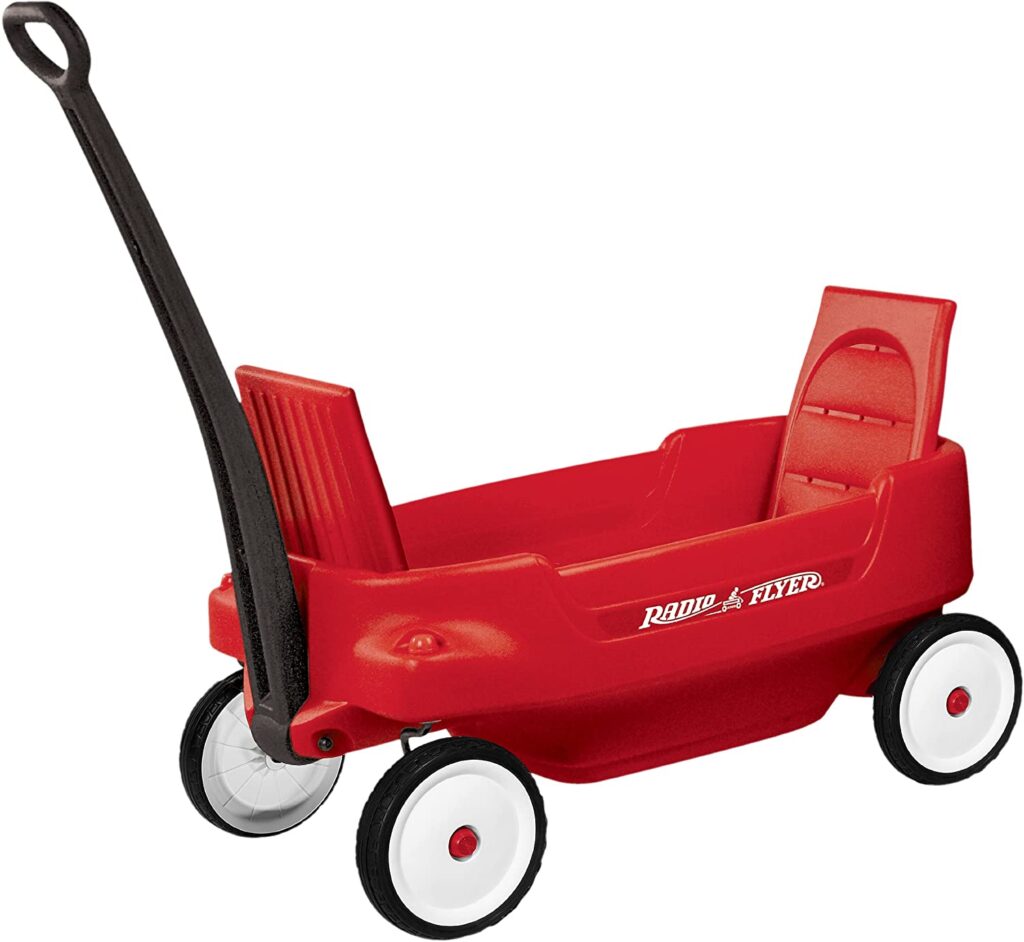
I was heartbroken when I saw that Radio Flyer started outsourcing production of its iconic little red metal wagon to China back in 2004, in the process closing a plant in Chicago and laying off 90 employees. That joins nearly every other Radio Flyer product, like tricycles, scooters, and ride-ons. Boo.
But I was equally pleased to see that they have maintained production of their plastic wagons in the USA, including this Pathfinder Wagon which is perfect for carrying 200 pounds of kids, stuff, or any combination thereof. The seats (with seat belts) fold up to let one or two kids sit, and it folds down to turn it into a wagon. Let’s hope Radio Flyer continues to make these in the USA.
If you’re in the market for a more classic wagon, skip Radio Flyer (as well as other sellouts like Duncan, John Deere, and Roadmaster) and check out this Berlin Flyer Sport Wagon, made in Holmes Country, Ohio by an Amish and Mennonite-owned and operated business using locally-sourced lumber and steel.
17. Most things from LEGO
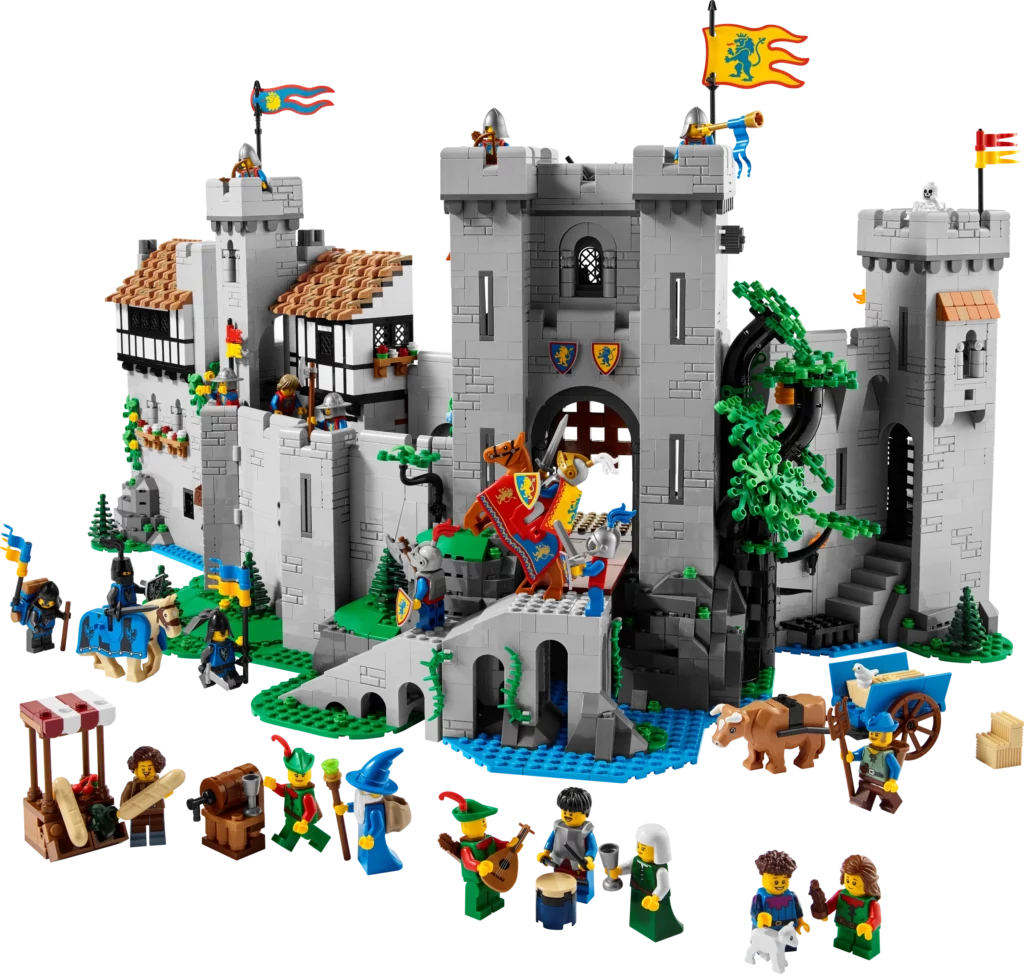
LEGO was one of my favorite toys growing up, and being a member of Gen X whom their “adult models” are targeted to, I never really stopped playing with them. Now, I’m introducing them to my daughter.
For years, LEGO bricks were made only out of Europe (Billund, Denmark and Baar, Switzerland). From 1975 to 2000 they were also made out of Connecticut.
Today, there are seven factories for LEGO—in Denmark, the Czech Republic, Hungary, Mexico, China, and Vietnam. In a surprise and welcome move, LEGO announced that a new factory will be opening in the United States in 2025.
While it’s disheartening to see China on the list, simply because of China’s track record of taking intellectual property and stealing it, I was also heartened to see Lego’s transparency. Here’s a cool breakdown of where your LEGO sets are coming from.
Simply put, if you’re buying LEGO in the United States, it’s most likely coming from Mexico (and soon Virginia), while if you’re buying in Europe, it’s likely coming from Denmark, the Czech Republic, or Hungary. They wisely opened a factory in Vietnam so that all APAC countries will not be dependent on China.
This is talking about LEGO bricks and brick sets, of course. When buying LEGO-branded clothes and accessories, there’s still a chance you’ll get something from China. But if you’re buying LEGO sets, you can be assured they’re NOT from China.
18. Anything from Green Toys
Green Toys should be on the top of every parent’s list. All of their toys are made safe in the USA, all of them are made responsibly from former milk jugs, and all of them are fun, sturdy, and practically indestructible.
This Green Toys Car Carrier is their best reviewed product on Amazon, along with close seconds like their Fire Truck and Dump Truck. These toys are solidly built, meaning they can withstand a ton of tough play in the playground, the backyard, the beach, or wherever your children’s adventures take them. When I was growing up our toys were indestructible because they were made of good old American steel (and back then we didn’t care so much about things like sharp jagged edges, rust, and other such annoyances. But Green Toys has managed to make toys out of plastic that could beat any of those toys in a demolition derby, while still stopping short of being able to double as a deadly weapon.
As I mentioned in another post, by buying this toy, you’re not just buying this toy. You’re sending a message. To American manufacturers who look only at the bottom line instead of their countries and their planet. To Green Toys, to tell them to keep up the great work and to resist what must be a daily drumbeat for them to offshore. And most importantly, to your child, who is watching everything you do, every minute of every day, to learn what is important to you.
19. Anything from American Plastic Toys
It’s almost become instinctive to me to assume that any toy made of plastic has to come from China. And then I discovered American Plastic Toys.
Think of any plastic toy you can. Plastic pails and shovels. Plastic ride-on cars. Plastic doll accessories. Plastic sports sets. Plastic sleds. Plastic pretend play toys like shopping carts and tea sets. Plastic kitchen sets. Chances are in most cases you end up sending all your money to brands like Fisher Price, which take their cut and pass the rest on to China.
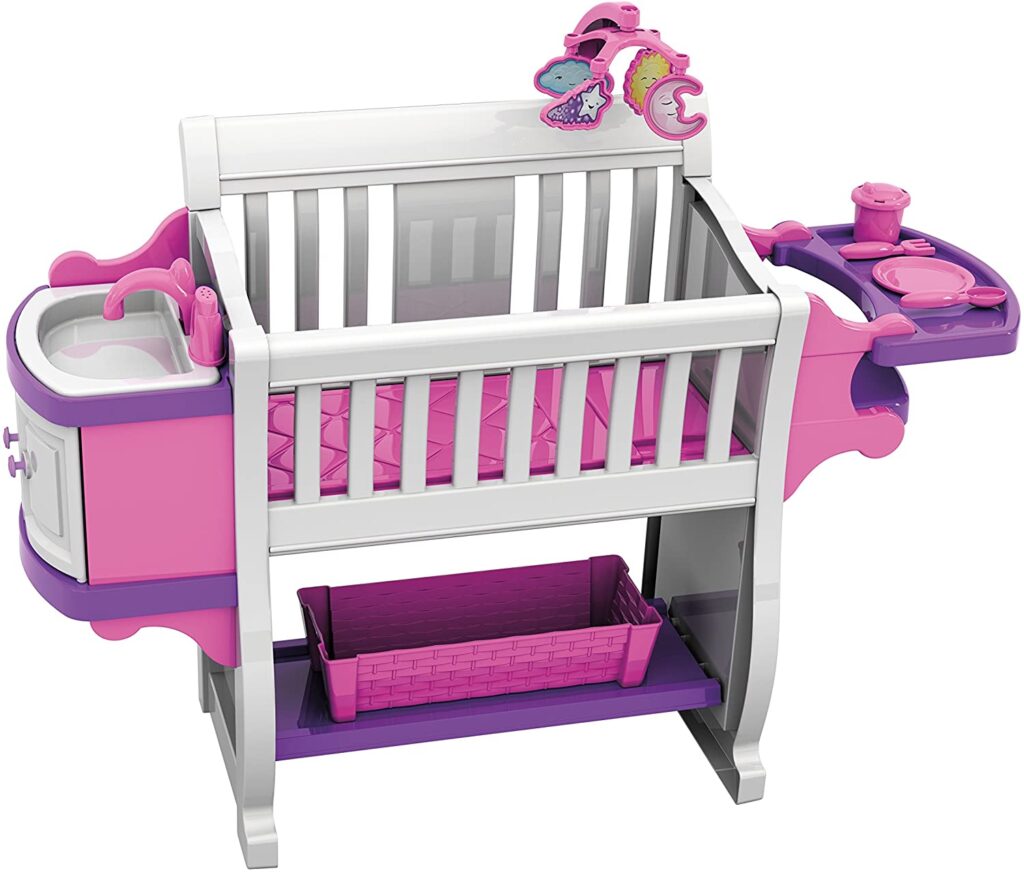
But what would your reaction be if I told you that you can find all these toys, made in America? Well, you can. American Plastic Toys builds all of these out of one of five facilities in Michigan and Mississippi. In total, they have 125 toys that they make, ranging from a simple sand pail to a kitchen play set.
All of their toys are molded with about 80% polypropylene and 20% polyethylene, with no phthalates or other poison common in China products. All their plastic is sourced from here in the United States, they do all their safety testing in the USA by independent US-based safety labs (whose jobs are to actually test for safety, not to tell a China business what they can get away with), and it even uses FDA-approved colorant. All of this means that you can trust it much more than anything that comes from China.
While foreign components are a fact of life, they actively try to minimize their use of it (they are transparent in saying that only 24% of components in their products are imported). And get this–their toys are amazingly affordable. This classic pail and shovel set costs only $11. At under $45, this sand table is actually cheaper than the equivalent product from Step2 (who once made everything in the USA, but seems to be buckling). And this complete nursery set looks more solid than just about any cheap made-in-China set you see for your child to take care of her favorite baby doll or stuffed animal.
So why isn’t the world beating a path to buy American Plastic Toys? They’re facing a few uphill challenges.
The first challenge is with us, the American consumer. We’re often get so fixated on getting “a good deal” that we don’t think about the real costs of buying stuff made in China, such as reduced product safety, poor product quality, and a Chinese government that couldn’t care less about the harm that it’s doing.
Another challenge is with Amazon. If you search Amazon for any of the products they sell (“plastic sand bucket”), chances are you’ll see a sea of cheap products dumped from China companies that all kind of look the same. Amazon props these listings up by allowing fake reviews, which trick their algorithms into showing them more and more.
Finally, another challenge is with American Plastic Toys. Demand is so high for their products that it seems that they have a hard time keeping them in stock. That opens the door for cheap China brands to come in and flood the marketplace. I think they could be doing a better job in marketing themselves too–this company in Germany is doing a nice job of differentiating its sand toys and their indestructible nature.
So how do we help them? It’s easy. The next time you need a common plastic toy, like a sand shovel or a sled, find an American Plastic Toy version at a retailer that carries them like Amazon, Walmart, Five Below, Walgreens, Big Lots, Dollar Tree, Family Dollar, Menards, or Dollar General. Even if it costs a few more dollars, be assured that when you buy the made in America version of the toy you want, you get what you pay for. The brand may not have the caché of a big toy company brand name, but it’ll last and you’ll feel good that not one red cent went to support the Communist Party of China. And tell your friends to do the same.
20. Most STEM sets from Thames and Kosmos
I have an arrangement with my daughter. If she wants most toys, she really has to “earn” them, by being on her best behavior, by doing well in school, by helping with housework, and so on. But if she wants toys that teach her things like science, math, technology, and engineering, I’ll be a pushover.
I wanted to get her a chemistry set. When I searched on Amazon, I found a lot of sets that looked promising, but they were either from brands that sold out to China (National Geographic and Discovery being the most disappointing–they had nothing to do with building their sets, they just license their name out), or from those annoying “fake” China brands like SNAEN with their thousands of fake reviews. And for the love of everything good, please avoid Bill Nye, who got rich off of science but is really not a very good science guy.
But Thames and Kosmos stood out, first because their sets are really, really well made (they’re not just “toys” but they teach actual science), and second because they’re mostly made in places like Germany and Taiwan (a few sets are made in China, but just avoid those–they’re easy to find because Amazon actually shows their country of origin in their product listing). They have STEM toys that are both interesting and teach chemistry, physics, robotics, botany, mechanical engineering, and much more. And they’ve won a boatload of awards across all their products.
Explore their online store to see which ones you like. Here are ones that stood out to me:
Chem C3000 Chemistry Set – At $250 this set goes well beyond a “toy”. It provides an amazing introduction to high school level chemistry, complete with high quality lab equipment and chemicals to power over 333 experiments. The Wall Street Journal named it the best chemistry set money could buy. And it’s made in Germany. Of course, this isn’t for everyone–if you’re looking for a more affordable price point, you can try the more affordable C1000 or C500. For a set that’s more “fun”, you can try a product like their Ooze Labs Chemistry station for children aged 6 and up that lets kids make slime, bubble, fizz, and colors all in the name of science.
Structural Engineering: Bridges and Skyscrapers – For folks who are more interested in structural engineering, this Structural Engineering set lets kids learn concepts like force, load, compression, tension, and more. It’s appropriate for kids 8-14, and goes a step beyond Legos to help them construct real structures like a real engineer. It’s made in Taiwan.
Wind Power 4.0 – This is one I’ll probably get for myself. I remember when I was in high school, I was proud of myself when I discovered that I could make a light bulb light up by connecting the wires of the bulb to a tiny motor and spinning the motor with my hands. This is an actual version of the same thing where you can build a turbine that charges a rechargeable AA battery to power a model car (all included).
Magnetic Science – This is a fun set that teaches kids about magnets of all shapes and sizes. It includes a lot of appealing pieces, and covers everything from how a compass works to how to build an electromagnet.
I could actually keep going talking about Thames and Kosmos sets that I love, but you should explore their store for yourself and see what jumps out at you.
21. Schleigh Horse Club Sets
As my little girl was growing up, I looked forward to the time I could buy her a set of Breyer horses, which I remember from growing up with a sister is a right of passage for all little girls since they began producing toy horses in 1950, all manufactured in the USA.
We recently finished reading Misty of Chincoteague and took a family vacation to Virginia, where we rode horses at the amazing Mountaintop Ranch outside of Shenandoah National Park and then visited Chincoteague and Assateague Islands themselves, taking in incredible views of wild horses.
My sister bought my daughter her first set of horses, and my heart sunk when I saw that this American classic was now made, you guessed it, in China. For Breyer Horses, the “end” came in 1985 when a company called Reeves International acquired Breyer Animal Creations and turned them from a company that made collectable works of art to a company that mass produced cheap plastic schlock. Yet another American icon relegated to the sweatshops of China.
That’s when I heard about Schleich. Schleich was founded in 1935 in Germany–not exactly a great time to be starting a company in Germany. But their speciality was in intricately detailed animal toys. And yes, they are famous for their toy horses, although the American public wouldn’t realize it for years later (Schleich first gained recognition in the US in the 1960s with its introduction of Smurf toys to the US market).
Schleich had been produced out of Germany, but when that became unsustainable, they diversified their supply chain to Romania, Moldova, Portugal, Tunisia, and China, with their China footprint wisely diminishing many years before COVID.
You do have to look carefully to avoid getting a set made in China, but I was able to find a number of products that weren’t, including this 44-Piece Riding Center Playset from Romania, this Pickup Truck and Horse Trailer from Germany, this Big Horse Show set from Costa Rica, and more from other countries. It looks like the latest kits mix together pieces from many countries, so while you probably can’t escape having some parts from China, at least you can be assured there’ll be some from others as well as long as you choose a product without a country of origin of China.
22. UGEARS 3D Puzzle Kits
Hat tip to Paul on this one, who turned me onto these toys during Black Friday. These are wooden puzzle kits where you can pop out wooden pieces from a laser cut slab of wood and then assemble them to make intricate models that have mechanical moving parts. UGEARS models are produced in Ukraine, a country which definitely could use all of our support right now.
Here are UGEARS’ most popular models:
Motorcycle – Amazon / UGEARS Official
V-Express Steam Train – Amazon / UGEARS Official
Grand Prix Racing Car – Amazon / UGEARS Official
Aero Clock – Amazon / UGEARS Official
Pneumatic Engine – Amazon / UGEARS Official
Typical of China brands, a competitor named ROKR copied the UGEARS idea and made their own copycat product. Typical of Amazon, if I search for UGEARS, I’m immediately shown a page full of ROKR products simply because ROKR takes the money they save by producing a cheap imitation product and uses it to blanket Amazon with their paid placements. They assume that American consumers will not bother to take the time to figure out that UGEARS puzzles are of infinitely higher quality (and sadly, they’re right).
I would recommend buying UGEARS products directly from them and bypassing Amazon’s sleazy business practices that promote China knockoff brands. If you must buy from Amazon, make sure you avoid getting fooled by filtering out all but official UGEARS products.
Removed from List
As toys that were once on the best-of list are removed, I’m going to copy the information here, both as a warning to avoid them, as well as to highlight those companies that are moving manufacturing to China even at a time when others are moving out. My best advice? SUPPORT the brands I listed above, as all of them are undoubtedly going through intense pressure to boost profits by going to low-bid contractors in a country where costs can be kept artificially low by a totalitarian regime.
4. Lincoln Logs
“Basic Fun” is the epitome of a sleazy company that is buying up iconic American brands, killing American manufacturing, and getting into bed with China (their headquarters is ostensibly in Boca Raton, FL, but they maintain offices in China (Hong Kong) and were outspoken opponents of putting tariffs on goods from China. Despite a lot of hype of Lincoln Logs moving manufacturing back to the USA in 2014, all signs indicate that they are once again being made in China. I hope that K’Nex itself doesn’t follow suit, but I think it’s probably only a matter of time.
Lincoln Logs is another iconic toy that’s made in the USA. Lincoln Logs were invented by John Lloyd Wright, the second son of an another American icon, Frank Lloyd Wright. John came up with the idea as he was helping his father build one of his greatest architectural works, the Imperial Hotel in Tokyo. The foundation of the hotel was made of interlocking beams of wood, designed to provide them with extra strength in the event of an earthquake. He designed and patented his toy in 1920. There are various theories of how the name came about; the most popular one is that it was named after Abraham Lincoln, who was famously born in a log cabin (the original set of logs included instructions on how to build Uncle Tom’s Cabin and Lincoln’s boyhood cabin). Some say it was named after John himself (whose middle name was originally Lincoln) or was a play on words of the word “linking”. All three are probably correct.
Lincoln Logs have gone through a lot in their over 100 year history. In 1943, Playskool bought the company. In 1968, Milton Bradley acquired the rights. As you can imagine, starting in the 1960s there was a lot of pressure for Lincoln Logs. Kids who through the 1950s had been fascinated by pioneer life turned their attention to the space age. In 1984, they were sold again to Hasbro. Hasbro led the charge in starting to destroy this iconic brand. They changed Lincoln Logs to be made out of plastic instead of wood. They moved all production to China.
The only good move that Hasbro made was licensing Lincoln Logs to K’Nex (which basically means that Hasbro still gets a cut of profits, but K’Nex makes the decisions). K’Nex, of course, has other products made in the USA, and so they decided to bring Lincoln Logs back and to make them out of wood again (some plastic parts are still made out of China, but that really can’t be helped). A company in Maine called Pride Manufacturing is making all of the wood pieces for Lincoln Logs now.
K’Nex, unfortunately, declared bankruptcy in 2018. A lot of toy makers no doubt looked at them and thought to themselves “I told you so”. But the fault didn’t lie with them. It lay with us, the American consumer. We’re the ones who abandoned companies like K’Nex and started pouring all of our money into cheap plastic China-made toys.
The assets of K’Nex have since been acquired by a company called Basic Fun!, based out of Florida. Basic Fun owns the licenses to lots of iconic American brands, including Lite Brite, Tonka, and View-Master. All of these iconic brands are manufactured out of China now. So far, Lincoln Logs and other K’Nex products are still being made in the USA, but I guarantee you that Basic Fun’s suppliers in China are all falling over themselves trying to convince Basic Fun to let them start manufacturing them.
How can you help? It’s very simple. Buy Lincoln Logs made in the USA while you still can. Buy K’Nex sets. Buy them for your kids, buy them for your relatives, buy them to donate. And tell your friends to. For every product you find that’s made in China, make a decision not to buy that and to buy this instead. That’s the only message that Basic Fun will hear. Because once Lincoln Logs and K’Nex manufacturing moves to China, that will be the end of them and the communities in the United States that are working to keep high quality, safe products made in the USA.
And it’s no sacrifice. When I watch my daughter playing with Lincoln Logs, I see her imagination take off in amazing ways, while I see that she gets bored immediately with pre-fab toys where some toy designer did all the imagining for her. I don’t cringe when I see her from time to time putting a piece in her mouth. And I have fun playing with her, as we collaborate to build the biggest log cabins, houses, hotels, skyscrapers, playgrounds, campgrounds, and dozens of other things together.
100 Anniversary Tin (111 pieces) – If you’re just getting started with Lincoln Logs, this is probably the best set to start with. It was created for the centennial celebration of Lincoln Logs and comes with blocks to make one of three buildings. It comes with instructions for some of the buildings–for others you need to try to match the picture on the tin.
Once you’ve mastered the first tin, you’ll want to expand your town with other popular sets like the Oak Creek Lodge or Horseshoe Hill Station. Or go hog-wild and get the Collector’s Edition Village. And the beautiful thing is, you can combine all the parts of the set to build even grander structures, like a deck for your sister’s Barbie Dream House or a skyscraper for your little brother’s Little People. Just be aware of counterfeits from China, including fake brands like “SainSmart”, “Wondertoys”, and “Joqutoys”. Amazon is allowing them to buy ads that appear when you type “Lincoln Logs” into their search engine (this is one reason I prefer Walmart–if you search Walmart for “Lincoln Logs”, you get Lincoln Logs).
5. Anything from K’Nex
Sadly, as of December 2023 I’m removing K’Nex from this list. If you read my comment above under Lincoln Logs, you’ll see that I was nervous that after being acquired by Basic Fun it was only a matter of time before they moved production 100% to China.
They’ve recently updated their labels to read “Made in China of USA parts”, like to comply with new FTC rules. While I appreciate that at least some parts are still made in the USA, one wonders with their track record of how long this can last.
Most Basic Fun-owned brands, mainly once-iconic brands like Care Bears, Littlest Pet Shop, Lite Brite, My Little Pony, Fisher Price, Tonka, and Viewmaster are made in China. Lincoln Logs and K’Nex were the last ones standing. Basic Fun is clearly using the great names that were built up over the last century to make money off unsuspecting parents and in the process destroy these once-great brands.
There’s one brand—Tinkertoys—that Basic Fun owns that seems to be bucking the trend; for how long we’ll need to see.
While we’re on the subject of K’Nex, they too have a storied, if shorter, history than Lincoln Logs. They were founded in 1992 by Joel Glickman, who at a wedding started playing with plastic straws and figured they’d make a great toy.
K’Nex are similar in concept to old construction toys like Tinkertoys or Erector sets, but they have a lot more flexibility–literally. This opens up a whole new dimension in construction, as kids can bend the plastic rods to make curves and shapes. This can lead to traditional architectural shapes like Legos can make, but also intricate Rube Goldberg contraptions like this one. And of course, roller coasters.
As I alluded to about, K’Nex rods and connectors have been made in the USA since the beginning–clearly a conscious and deliberate choice from the company. And for now, Basic Fun appears to be keeping this practice in place. This is from their Web site.

Although watch this page carefully because the moment you see this sentence disappear is the moment you know that a Basic Fun supplier in China made them an offer they couldn’t refuse. As I said with Lincoln Logs, the way to avoid that eventuality is to buy as many K’Nex sets as you can. Here are the most popular ones. [2023 Update – They’ve removed the copy]
100 Model Building Set (863 pieces) (Walmart exclusive) – This is the quintessential starter set for those just beginning with K’Nex. It’s exclusive to Walmart and contains 863 pieces to build 100 models (the equivalent version on Amazon contains 705 pieces with instructions to build 70 models).
K’Nex Amusement Park in a Box (378 pieces) – K’Nex has a whole set of roller coasters in their Thrill Rides series, but this set is a great way to get your feet wet in building a simple working roller coaster and ferris wheel. Once you master this set, you’ll want to advance to more advanced sets like their Clock Work Roller Coaster and their Dragon’s Revenge Thrill Coaster.
K’Nex Imagine Series: Power and Play Motorized Building Set (529 pieces) – As your children get older, they’ll be ready for more advanced sets like this. It includes K’Nex parts, but also a battery-powered motor to get them to come to life. They can design prop planes, helicopters, windmills, moving art, or anything else their brains can think of.
K’Nex Architecture Series: Golden Gate Bridge (Amazon exclusive) – As children who grew up with K’Nex become adults with children of their own, K’Nex is taking a page from Lego and making sets that are as cool to look at as build. This Golden Gate Bridge set is a good example. The brilliance of K’Nex’s strategy here is that it taps into the market that Lego created (with their recreations of architecture like the Empire State Building) but they showcase what makes K’Nex unique to Lego–the ability to simulate curved shapes like the suspension wires on a bridge.
As with Lincoln Logs, the best thing about toys like this your child does all the imagining and building. Buying complicated toys that already have all the details in them is a lot like buying paper that already has drawings on them. Just as a box of crayons and a blank sheet of paper helps build your child’s creativity and confidence, so does dumping a pile of K’Nex pieces on the ground and letting them experiment and discover new things on their own.
About the photo at the top
By the way, the image you see on the top of the page is from a store called Bobb Howard’s General Store, an amazing store in New Hyde Park, NY that carries all the vintage candy and toys you remember, many still made in the US. They’re worth a visit if you’re ever out on Long Island.
Do you know of other iconic toys not made in China worthy of mention here? Let us know in the comments!
- Tags:
- toys
- toys made in usa
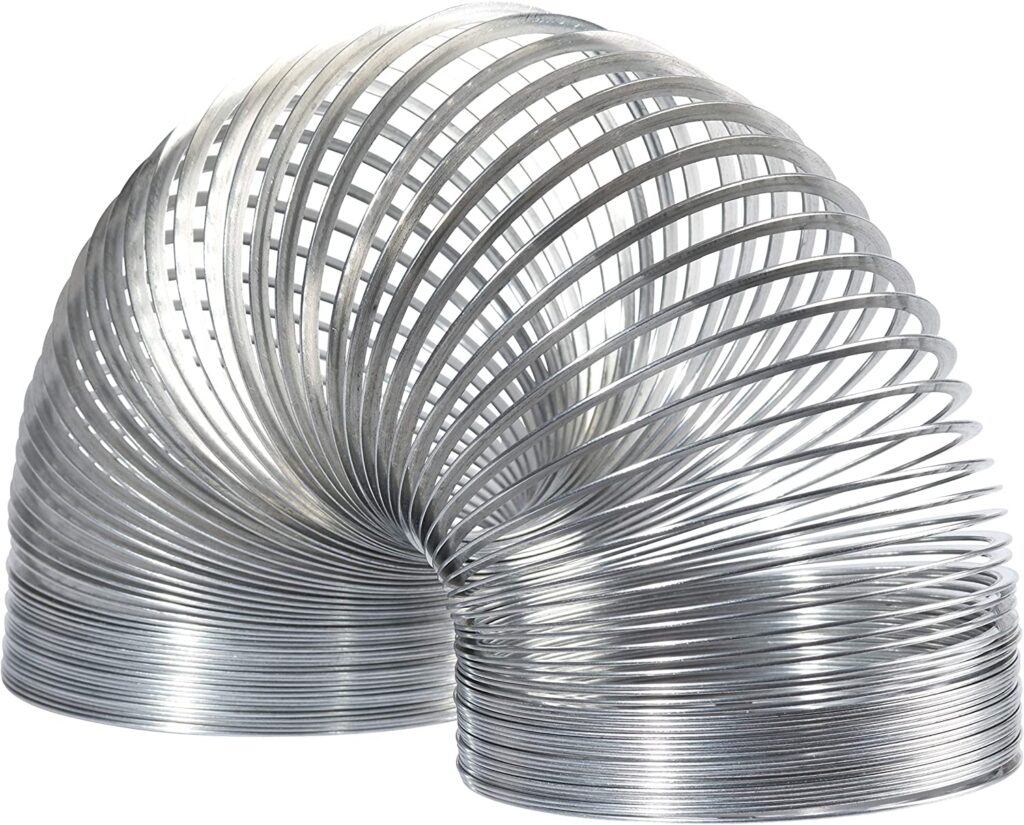

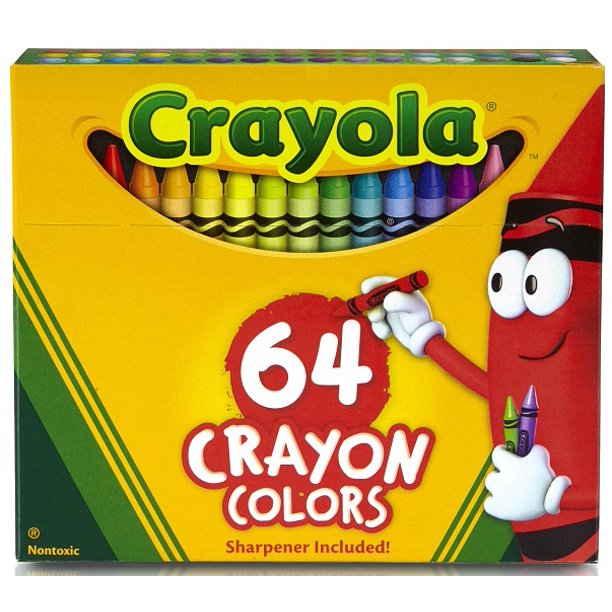


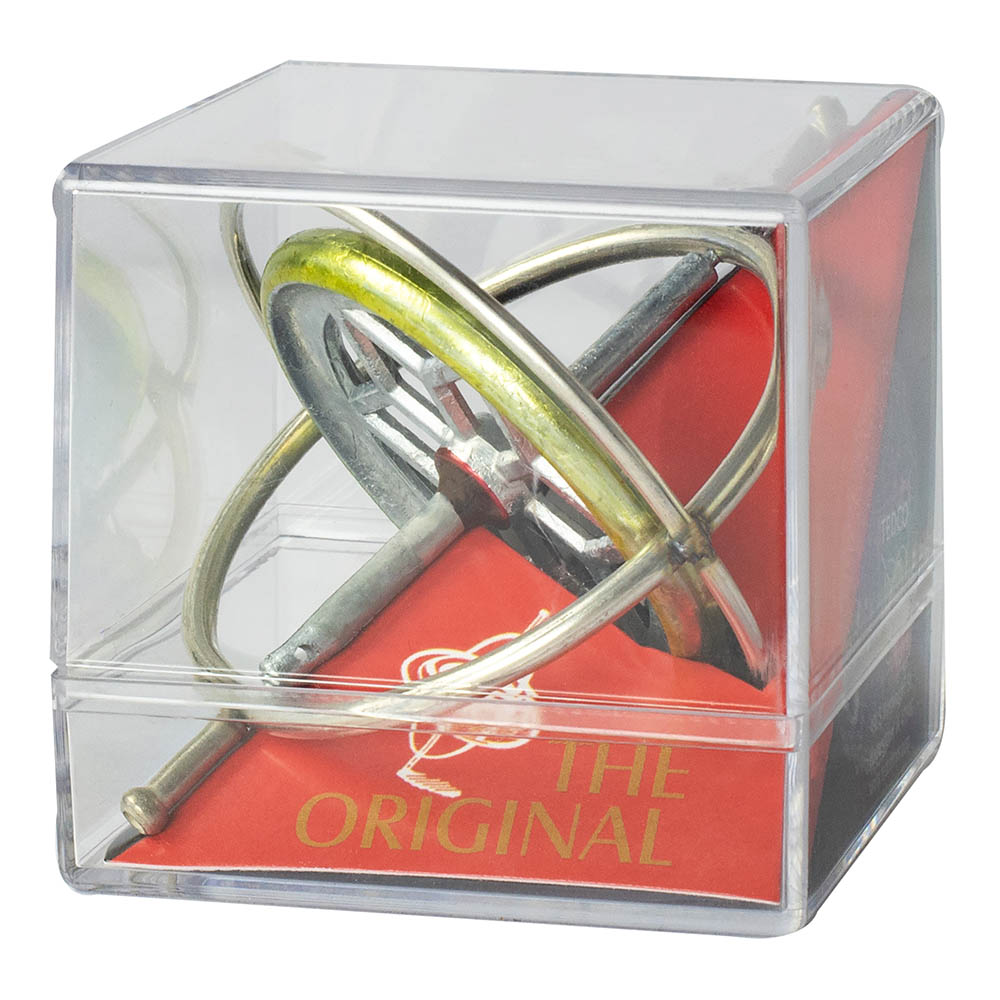
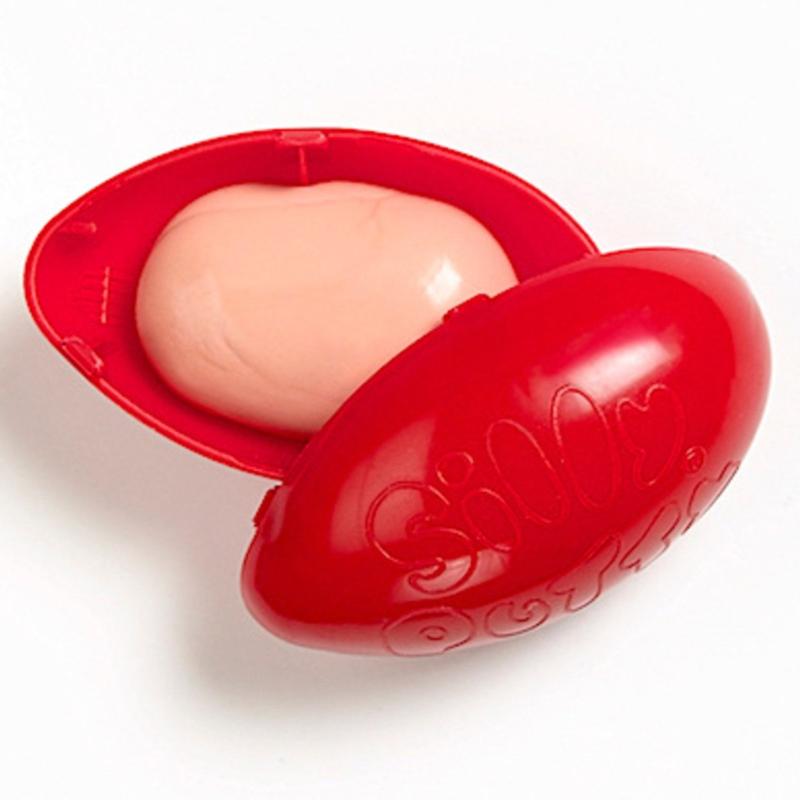

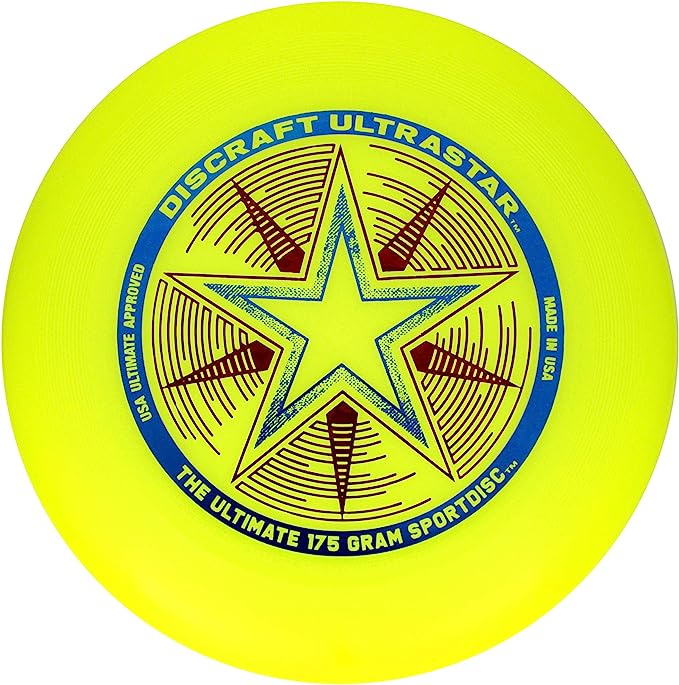
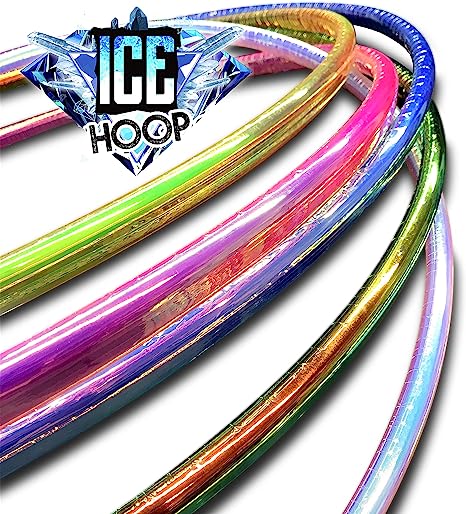




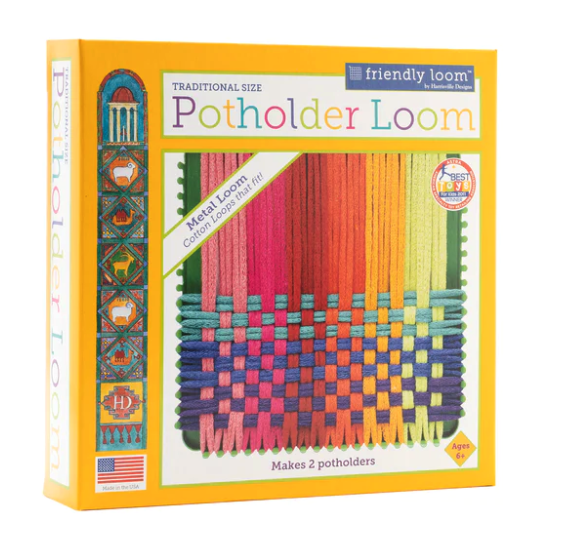
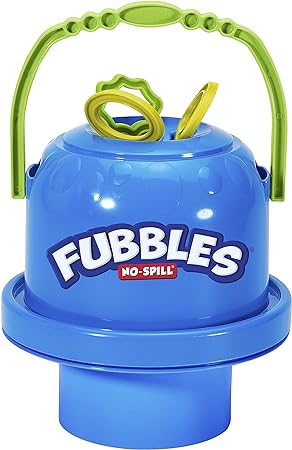
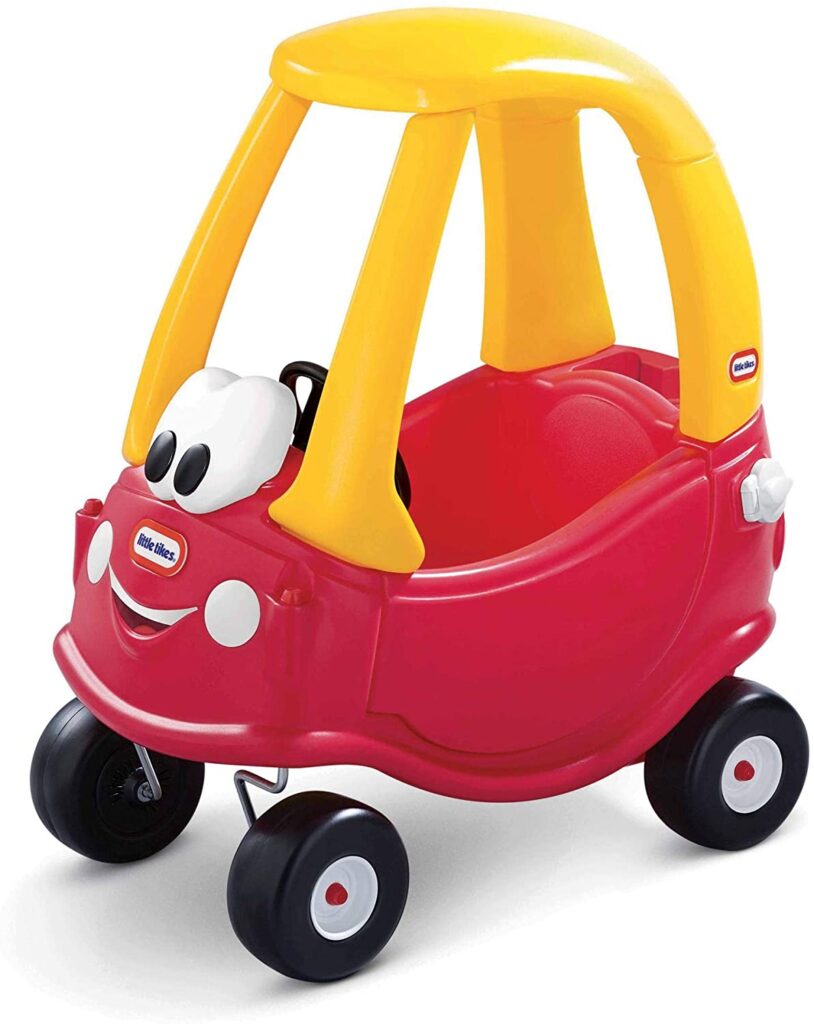
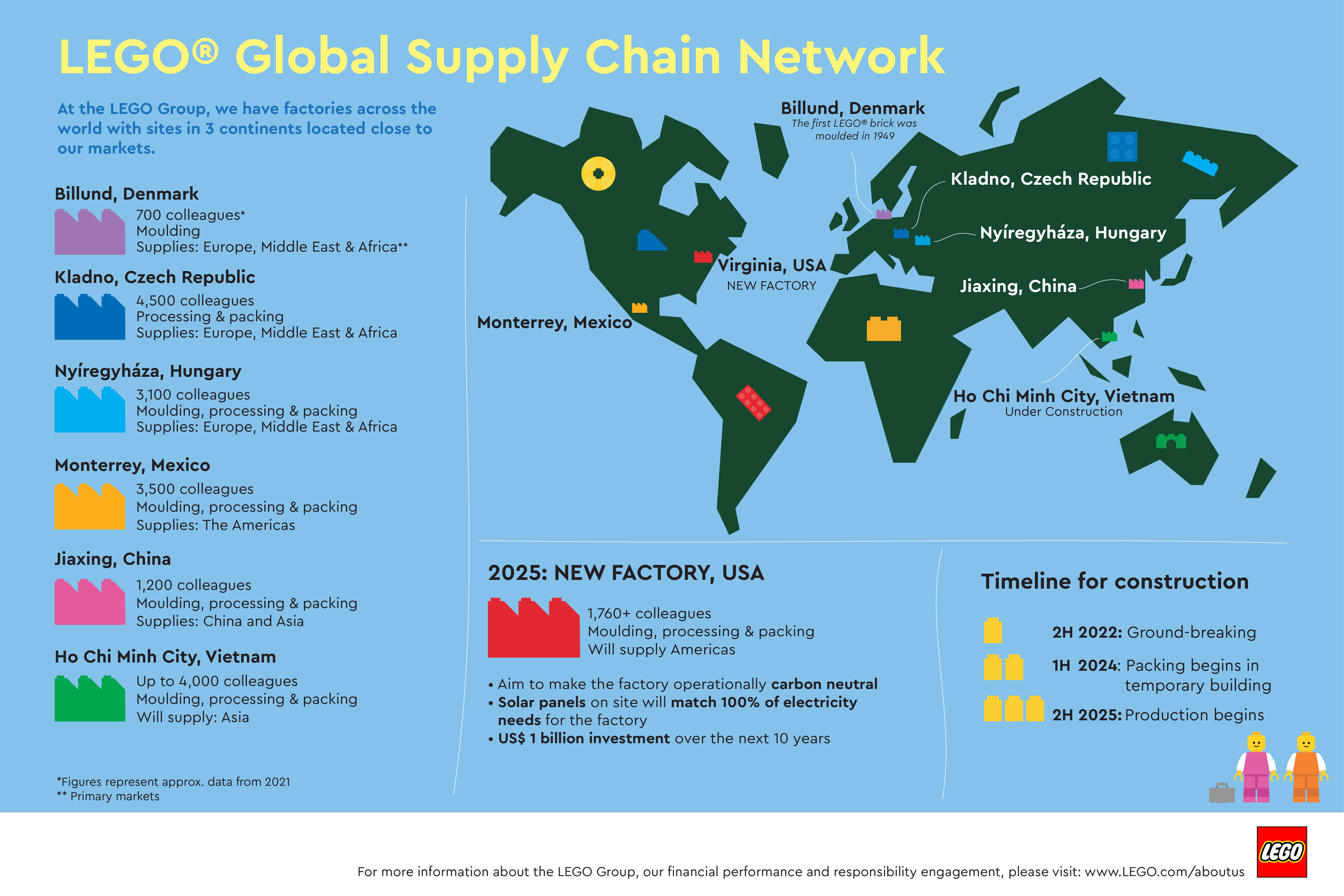
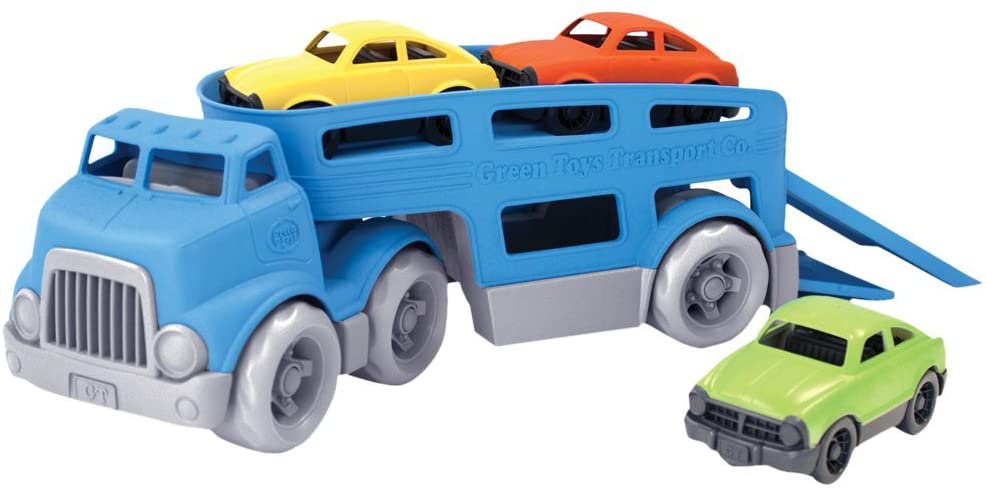
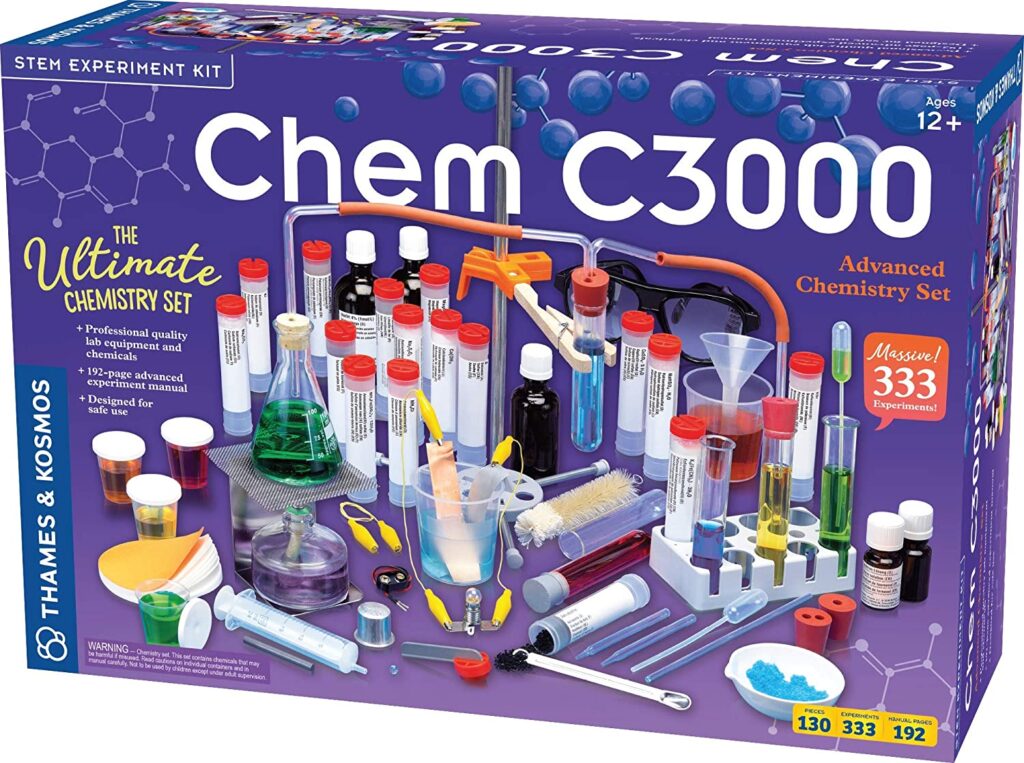


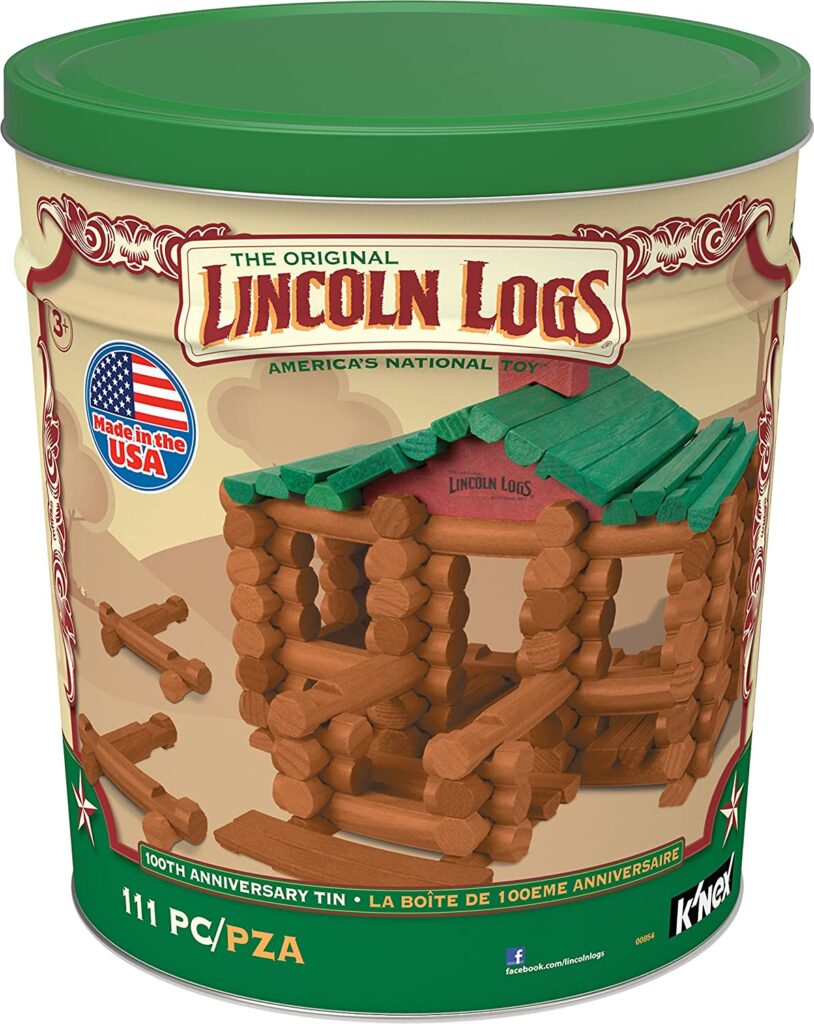
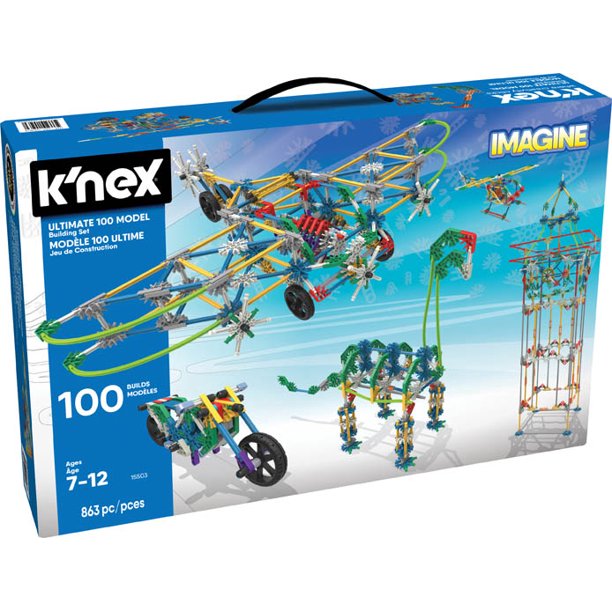
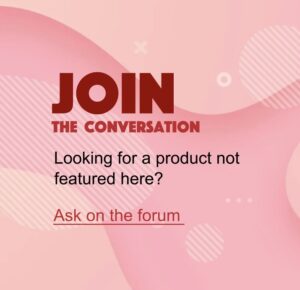
The Klorofil’s magic tree, which exists for many decades. Made in France.
Lot’s of European kids had this tree in the past.
https://www.amazon.co.uk/Klorofil-700200-Activity-Toy-Multi-Coloured/dp/B07GZNFTWJ
Hi – thanks for the post/info – looked up the Little Tikes Coupe in Amazon (https://amzn.to/3NW9SqE) – shows as made in China 🙁
I see under “Product Information” that someone listed Country of Origin as China, but in the Product Description it still says “Made in USA”.
In addition, on their site they still list all their Cozy Coupe’s under their “Made in the USA” section.
https://www.littletikes.com/collections/made-in-the-usa?type=cozy%20coupes&sort-by=created-ascending
I actually have one of these myself, and mine is clearly made in the USA.
This isn’t the only confusing/misleading Amazon product listing. Even their smaller products have listings that say “made in the USA” but their product information shows differently (https://amzn.to/3uzxkmH)
MGA Entertainment (which owns Little Tikes) certainly doesn’t shy away from China manufacturing (their other toys like L.O.L. Surprise, Bratz, and Rainbow High are certainly being vomitously churned out from China factories). But they’ve held pretty strong on making Little Tikes products out of their Hudson, Ohio facility; in fact back in 2013 they pulled many of their products out of China and back to Ohio. Let’s hope there isn’t a new generation of executives returning to past foolish decisions.
I’m hoping this is simply a case where some of these are made in other factories to serve other markets–but if anyone out there orders this or sees this in their brick-and-mortar store with a Made in China tag, please let me know and I’ll take it off. I’m hoping this is not the case, as it would be a tragic loss, in both real terms and symbolically, for the USA.
Hi Steve – I ended up buying a Little Tikes Coupe (and the Trailer) – but not from Amazon! The Coupe was made in USA. The Trailer was made in Poland. Both good quality. 2 yo son approves.
Thank you for this article. Just FYI, Ravensburger jigsaw puzzles are made in Germany (some in the Czech Republic).
Thank you for this post! I hope it will continue to be updated.
Hello, I would like to propose Cobi bricks. They are all made i Poland in Mielec. They’re popular in Europe but they sell them in USA as well. They have great military line which sets of IT I buy to my nephew.
Hi, I think we could add fischertechnik to the list. They say most parts are made in their factory in Schwarzach, Germany and only a few parts are manufactured outside of the EU.
https://www.fischertechnik.de/de-de/service/unternehmen/qualitaet-und-nachhaltigkeit/ (German)
Products are here:
https://www.fischertechnik.de/en (English)
https://www.fischertechnik.de/de-de (German)